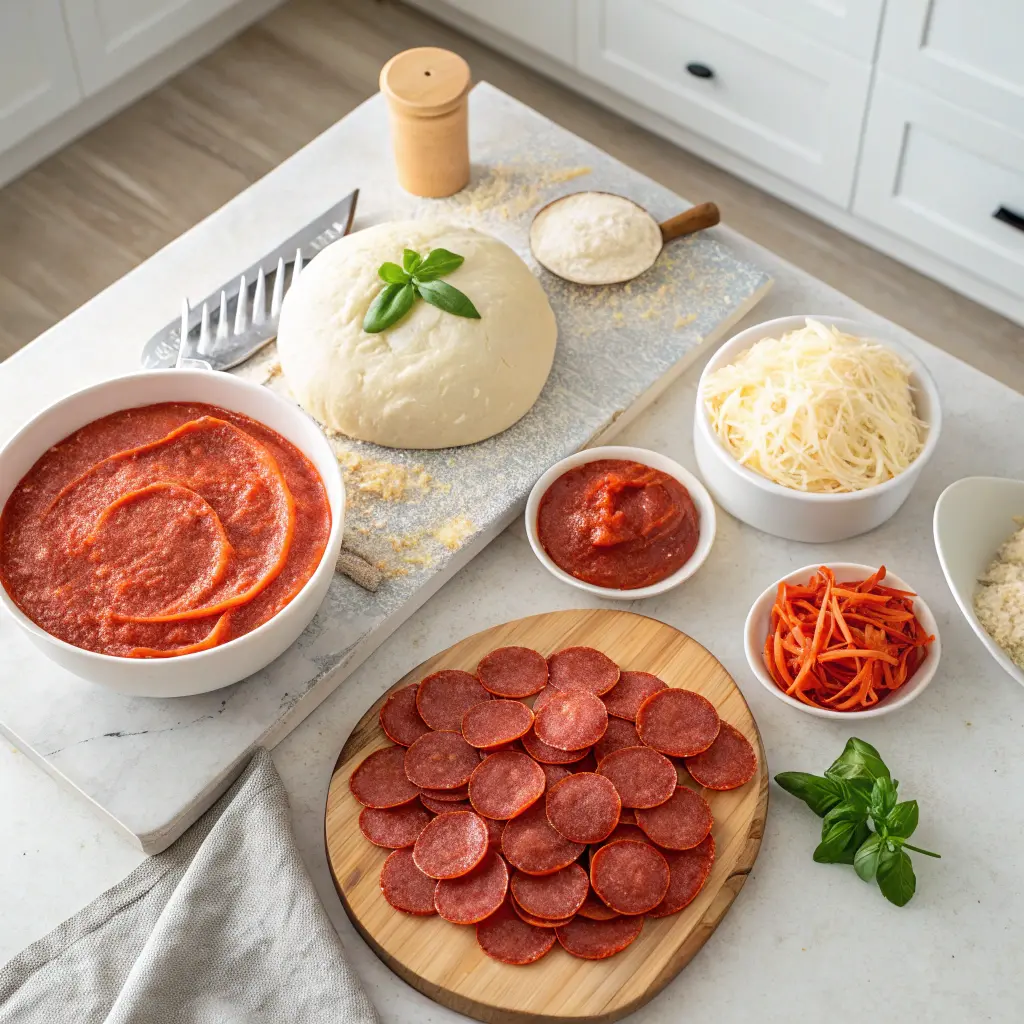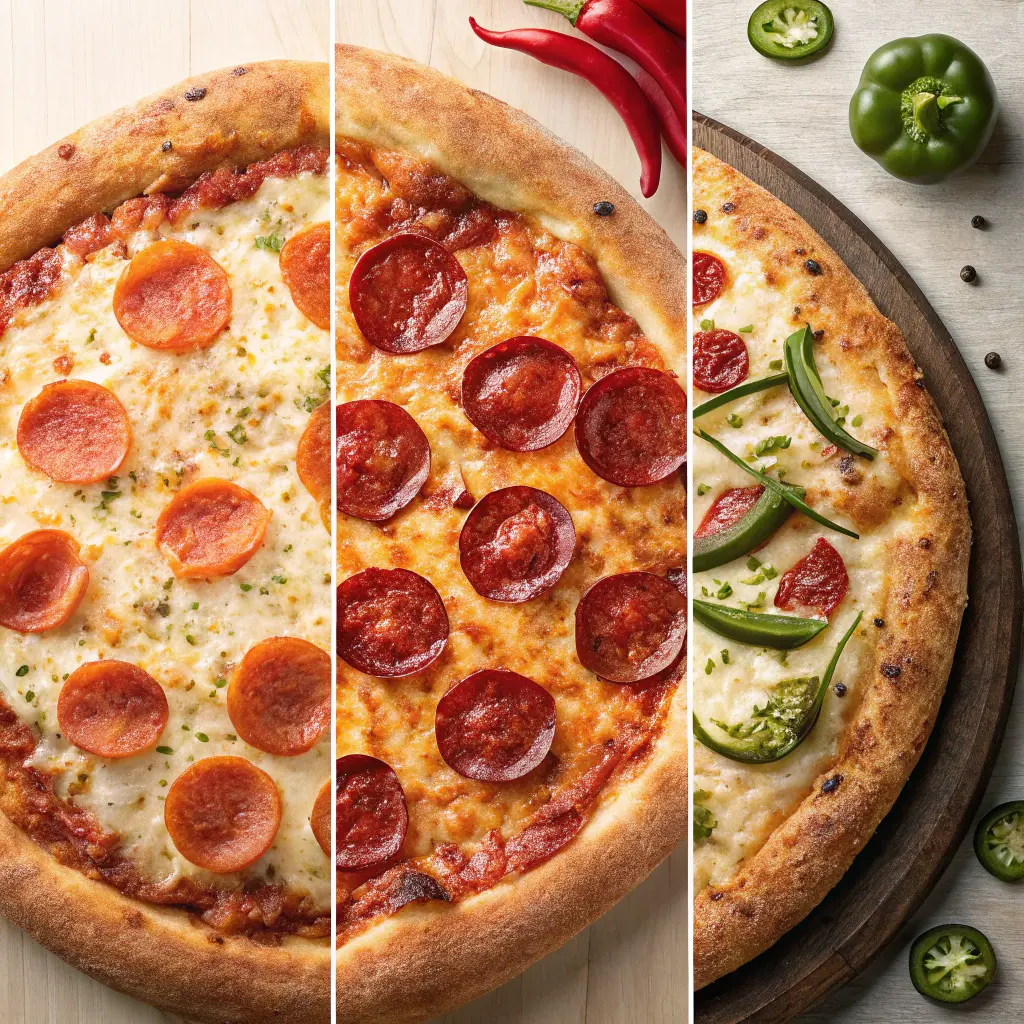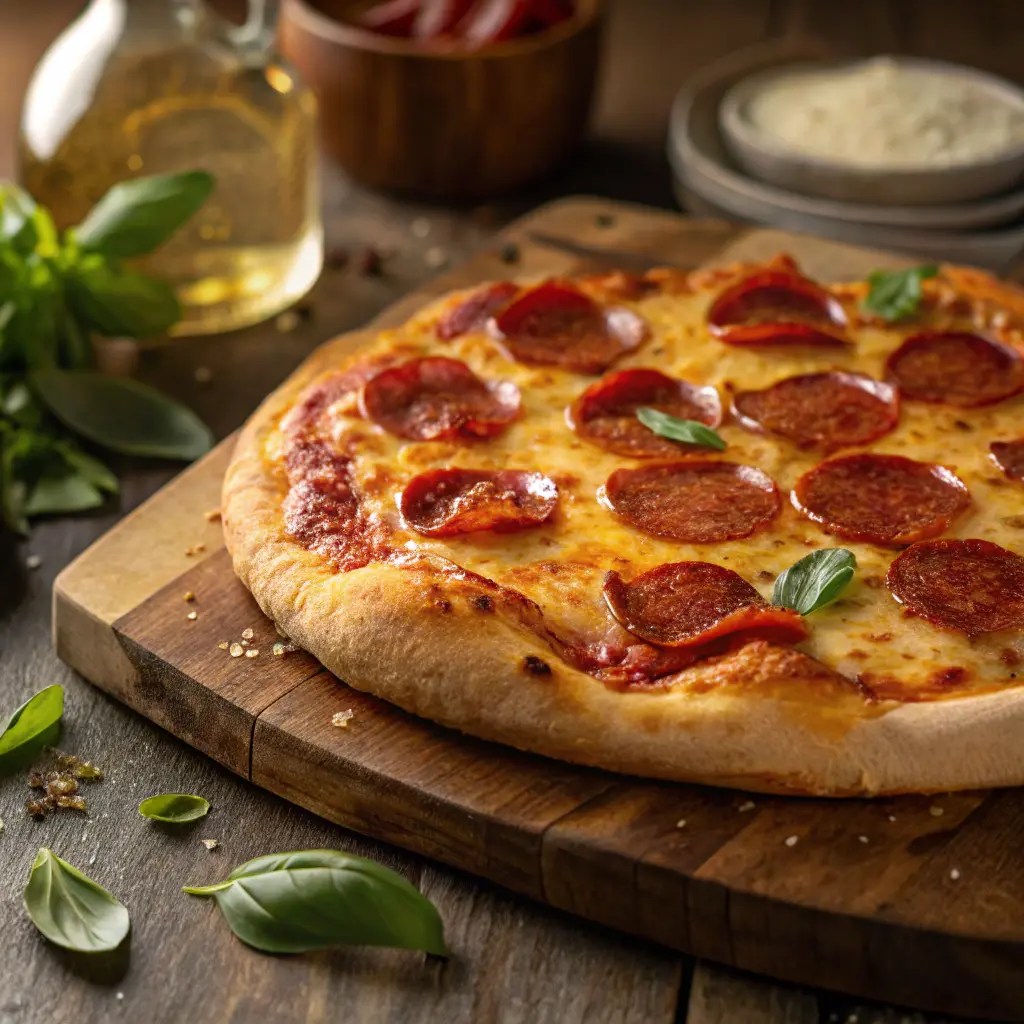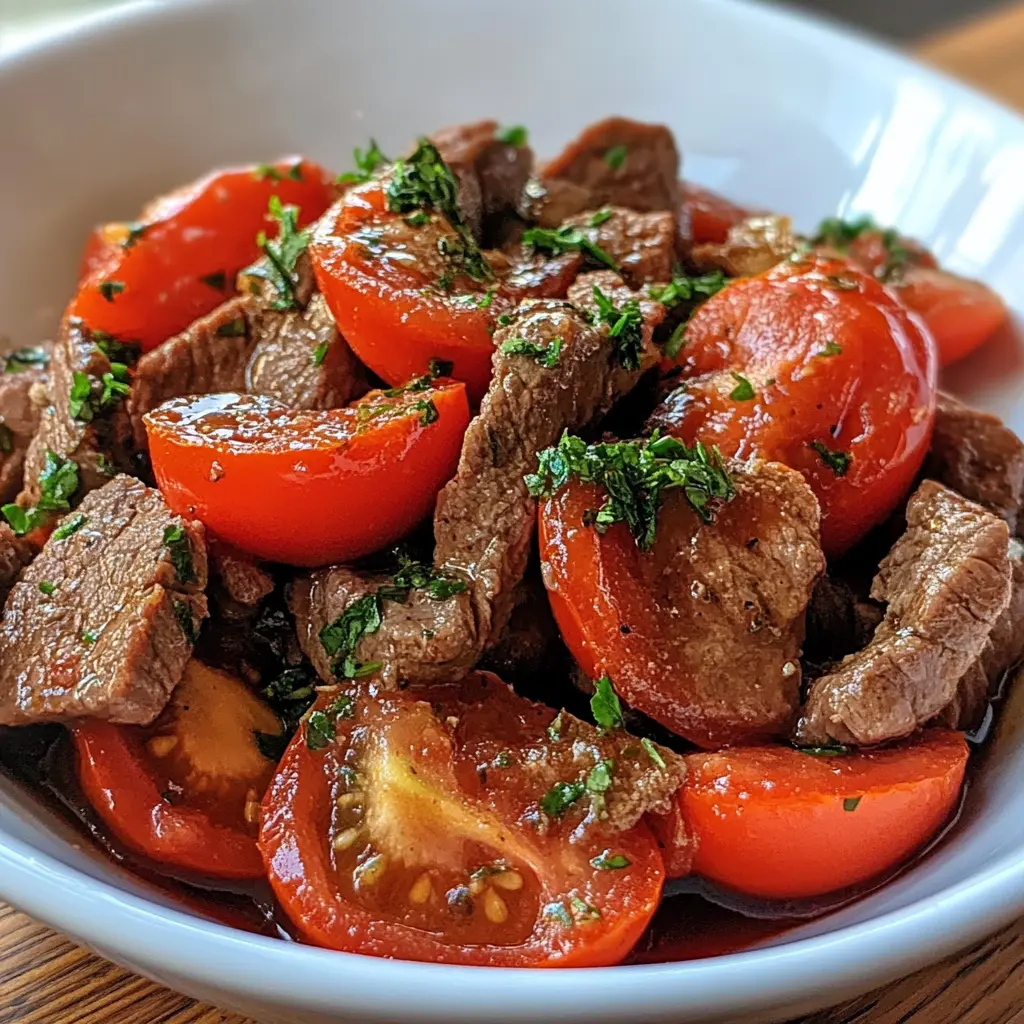Introduction to Pepperoni Pizza
Pepperoni pizza is one of the most beloved and iconic dishes in the world. Known for its crispy, spicy slices of pepperoni layered over gooey, melted cheese and a perfectly baked crust, this pizza has become a staple in pizzerias and households alike. Whether you’re ordering from your favorite pizza joint or making it from scratch, its bold flavors and satisfying textures make it an all-time favorite.
The origins of pepperoni pizza can be traced back to Italian-American cuisine. While traditional Italian pizzas often feature simple toppings like fresh tomatoes, basil, and mozzarella, Italian immigrants in the United States began experimenting with spiced cured meats like pepperoni. Over time, the combination of spicy, slightly smoky pepperoni with the rich, cheesy base of a classic pizza became a hit, cementing its place as a go-to option for pizza lovers everywhere.
This article will take a deep dive into everything you need to know about pepperoni pizza, from its ingredients and variations to a step-by-step guide for making the perfect homemade version.
Table of Contents
Part 1: What is Pepperoni Pizza Made Of?
Essential Ingredients for Classic Pepperoni Pizza
A traditional pepperoni pizza consists of a few key ingredients that come together to create its signature taste. The foundation starts with pizza dough, which provides the crispy yet chewy texture that holds all the toppings. Tomato sauce, often made from crushed tomatoes, garlic, and herbs, adds a tangy and slightly sweet balance to the spicy pepperoni. Mozzarella cheese is the most common choice, as it melts beautifully and offers a creamy contrast to the other flavors.
The star of the pizza, pepperoni, is a type of cured sausage that brings spice, smokiness, and a touch of heat to the dish. It’s typically made from a mix of beef and pork, seasoned with paprika, garlic, and other spices. The pepperoni slices crisp up in the oven, releasing flavorful oils that blend with the cheese and sauce for a mouthwatering result.
Variations of Pepperoni and Cheese Combinations
While the classic version features mozzarella cheese, many variations incorporate other types of cheese to enhance flavor and texture. Some pizzerias add provolone for a sharper bite, while others mix in cheddar or parmesan for extra richness. Another popular twist is using fresh mozzarella, which creates a creamier and slightly more delicate melt.
For those looking to switch up the pepperoni itself, some opt for turkey pepperoni as a leaner alternative, while others prefer spicier varieties that include extra red pepper flakes. Gourmet versions might feature artisan-cured pepperoni with a more complex flavor profile. No matter the variation, the combination of cheese, sauce, and pepperoni remains the heart of this beloved pizza.

Part 2: Understanding Pepperoni – Is It Meat or Pork?
The Composition of Traditional Pepperoni
Pepperoni is a type of cured sausage that is typically made from a blend of pork and beef. The exact ratio of these meats can vary depending on the brand or recipe, but both are combined to achieve the signature texture and flavor. The meat mixture is finely ground and seasoned with a blend of spices, including paprika, garlic powder, black pepper, and red pepper flakes, which give it its distinct smoky, slightly spicy taste.
The curing process involves adding salt and sodium nitrite, which help preserve the meat and prevent bacteria growth. This also gives pepperoni its bright red color and firm texture. After being mixed and seasoned, the meat is stuffed into casings and left to dry-cure for several days or even weeks. This drying period intensifies the flavor, making pepperoni the perfect topping for pizza.
Beef vs. Pork Pepperoni – What’s the Difference?
While most traditional pepperoni contains both beef and pork, some variations are made exclusively from one type of meat. Beef pepperoni is commonly found in areas where dietary restrictions prohibit pork consumption. It has a slightly firmer texture and a deeper, more robust flavor. Pork-based pepperoni, on the other hand, tends to be softer with a richer, slightly fattier taste.
Many brands offer a mix of the two to balance the flavors and textures. However, those looking for a specific type, whether for dietary, religious, or personal preference reasons, can find options made entirely from one meat source. Understanding these differences helps consumers make informed choices when selecting pepperoni for their pizza.
Part 3: Is Pepperoni Halal or Haram?
Religious and Dietary Considerations
One of the most common questions about pepperoni is whether it is halal or haram. Traditional pepperoni, which is made from a mixture of pork and beef, is considered haram (forbidden) in Islam due to the presence of pork. Additionally, the processing methods used in standard pepperoni production may not always adhere to halal dietary guidelines, even when beef is the primary ingredient.
For pepperoni to be considered halal, it must be made exclusively from halal-certified meat, usually beef, turkey, or chicken. The meat must also be slaughtered according to Islamic guidelines, ensuring that it meets religious dietary laws. Halal pepperoni is becoming increasingly available in specialty stores and pizzerias catering to Muslim consumers.
Halal-Certified Pepperoni Alternatives
For those who love the spicy, smoky flavor of pepperoni but need a halal option, there are several alternatives available. Many brands now offer halal beef or turkey pepperoni that mimics the taste and texture of traditional versions without violating dietary restrictions. Some plant-based or vegetarian pepperoni options are also available, using spices and seasonings to replicate the classic flavor.
When purchasing pepperoni, it’s essential to check for halal certification from a trusted authority. This ensures that the product meets all necessary religious and food safety standards. Many pizza chains and restaurants now offer halal-friendly options, making it easier to enjoy a delicious pepperoni pizza while staying within dietary guidelines.
Part 4: What is Pepperoni on Pizza?
The Role of Pepperoni as a Topping
Pepperoni is the most popular pizza topping in the United States, and for a good reason. Its rich, smoky, and slightly spicy flavor pairs perfectly with melted cheese and tangy tomato sauce, creating a satisfying balance of taste and texture. The round, thinly sliced pieces crisp up in the oven, releasing flavorful oils that blend into the cheese, enhancing the overall experience of every bite.
Unlike other pizza toppings that may be added raw, pepperoni is a cured meat, meaning it is already cooked and ready to eat. This makes it easy to use straight from the package, requiring no additional preparation before being placed on the pizza. When baked at high temperatures, the edges of the pepperoni curl up slightly, creating small crispy cups that hold bursts of flavorful oil, a signature trait of a great pepperoni pizza.
How Pepperoni Affects Pizza Flavor and Texture
Pepperoni brings more than just a bold, meaty taste to pizza—it also affects the overall texture. As it cooks, the fats within the pepperoni melt, infusing the cheese and sauce with extra richness. This creates a slightly chewy yet crispy bite, making each slice even more indulgent.
Different types of pepperoni can alter the texture and taste of a pizza. Thin slices crisp up more, while thicker slices remain chewier and retain more moisture. Spicy varieties add an extra kick, while smoked versions provide a deeper, more complex flavor. Some artisanal pizzerias even experiment with premium cuts of pepperoni, enhancing the gourmet appeal of this beloved topping.
Part 5: What is Pepperoni Made Of?
Ingredients and Seasonings Used in Pepperoni
Pepperoni is a type of cured sausage made from a combination of finely ground meats and flavorful seasonings. Traditional pepperoni is primarily a mix of pork and beef, though some variations use only one type of meat. The blend of meats is what gives pepperoni its distinct texture—firm yet slightly chewy when cooked.
The seasonings in pepperoni play a significant role in its signature taste. Paprika is the key spice, responsible for the deep red color and mild smoky flavor. Garlic powder, black pepper, red pepper flakes, and fennel seeds are also commonly used to add spice and depth. Some recipes include sugar or dextrose to balance out the heat with a touch of sweetness.
The Process of Making Traditional Pepperoni
Pepperoni undergoes a curing and drying process that enhances its flavor and preserves the meat. The first step involves mixing the ground meat with spices, salt, and curing agents like sodium nitrite. This curing salt helps prevent bacteria growth while also giving the pepperoni its characteristic color.
Once the meat mixture is properly seasoned, it is stuffed into casings—typically natural or collagen casings—to form the sausage shape. The sausages are then hung in controlled environments to dry and cure over several days or weeks. Some varieties are smoked during this process, adding an extra layer of flavor.
After curing, the pepperoni is sliced into thin rounds and packaged for sale. When placed on a pizza, the heat from the oven causes the fat in the pepperoni to render, creating the signature crispy edges and slightly curled shape that pizza lovers enjoy.
Part 6: Is Salami Beef or Pork?
Differences Between Salami and Pepperoni
Salami and pepperoni are often confused due to their similar appearance and use in cured meats, but they have distinct differences in ingredients, preparation, and flavor. Salami is a broad category of cured sausages that originated in Italy and can be made from various meats, including pork, beef, venison, or even poultry. It is usually seasoned with garlic, salt, herbs, and wine, resulting in a rich and savory taste. Unlike pepperoni, salami is not as spicy and has a coarser texture due to the larger chunks of meat and fat.
Pepperoni, on the other hand, is a specific type of salami that is spicier and has a softer, finer texture. It is typically made from a combination of pork and beef and is seasoned with paprika and chili peppers, giving it a bold, smoky flavor. The curing and drying process of pepperoni is shorter than that of traditional salami, making it slightly more moist and ideal for use as a pizza topping.
Types of Salami: Beef, Pork, and Mixed Meat
Salami comes in various types depending on the region and the type of meat used. Some of the most common variations include:
- Pork Salami: The most traditional version, made entirely from pork and seasoned with classic Italian spices.
- Beef Salami: A popular choice in areas where pork is not consumed, such as in kosher or halal diets. Beef salami has a firmer texture and a slightly leaner taste.
- Mixed Meat Salami: A combination of pork and beef, offering the richness of pork with the robust flavor of beef.
- Turkey or Chicken Salami: A leaner alternative that is lower in fat while still maintaining the cured, spiced flavor.
Each type of salami has its unique characteristics, making it suitable for different culinary uses. While pepperoni is the preferred choice for pizza, salami is often enjoyed on charcuterie boards, sandwiches, and antipasto platters.
Part 7: How to Make the Best Homemade Pepperoni Pizza
Step-by-Step Recipe for Homemade Pepperoni Pizza
Making pepperoni pizza from scratch allows you to control the ingredients and customize the flavors to your preference. Whether you prefer a thin, crispy crust or a thick, chewy one, following these steps will help you achieve a delicious homemade version.
Ingredients:
For the dough:
- 2 ½ cups all-purpose flour
- 1 teaspoon salt
- 1 teaspoon sugar
- 1 packet (2 ¼ teaspoons) active dry yeast
- ¾ cup warm water
- 1 tablespoon olive oil
For the toppings:
- 1 cup pizza sauce (store-bought or homemade)
- 2 cups shredded mozzarella cheese
- 20-25 slices of pepperoni
- 1 teaspoon dried oregano
- ½ teaspoon crushed red pepper flakes (optional)
Instructions:
- Prepare the dough – In a small bowl, mix warm water, sugar, and yeast. Let it sit for about 5 minutes until foamy. In a large mixing bowl, combine flour and salt, then add the yeast mixture and olive oil. Knead the dough for about 8-10 minutes until smooth. Cover and let it rise for about an hour or until it doubles in size.
- Preheat the oven – Set your oven to 475°F (245°C) and place a pizza stone or baking sheet inside to heat up.
- Roll out the dough – On a lightly floured surface, roll out the dough to your desired thickness. For a crispier crust, make it thinner; for a chewier texture, keep it slightly thicker.
- Assemble the pizza – Transfer the rolled-out dough onto a parchment paper or a pizza peel. Spread the pizza sauce evenly over the dough, leaving a small border around the edges. Sprinkle the shredded mozzarella cheese over the sauce, then arrange the pepperoni slices on top.
- Bake the pizza – Carefully slide the pizza onto the preheated baking sheet or pizza stone. Bake for 10-12 minutes or until the cheese is bubbly and golden, and the crust is crisp.
- Finish and serve – Remove the pizza from the oven and let it cool for a minute. Sprinkle dried oregano and crushed red pepper flakes for extra flavor. Slice and enjoy.
Baking Tips for a Crispy Crust and Perfect Cheese Melt
- Use a pizza stone – A preheated pizza stone helps create a crispy bottom crust by evenly distributing heat.
- Brush the crust with olive oil – Before baking, lightly brush the edges of the crust with olive oil for a golden-brown finish.
- Use high-moisture mozzarella – Fresh mozzarella melts better and creates a gooey texture, while low-moisture mozzarella makes the pizza less watery.
- Don’t overload the toppings – Too many toppings can make the pizza soggy. Keep it balanced for the best results.
Homemade pepperoni pizza is a fun and rewarding way to enjoy this classic dish with fresh, high-quality ingredients.

Part 8: The Best Pepperoni Pizza Variations to Try
Spicy Pepperoni Pizza
For those who love a kick of heat, spicy pepperoni pizza is a must-try. This variation takes the traditional recipe and adds extra layers of spice using ingredients like hot sauce, chili flakes, or spicy cured meats.
How to make it spicier:
- Use spicy pepperoni, which contains extra red pepper flakes in the seasoning.
- Add jalapeños or banana peppers for an extra heat boost.
- Drizzle hot honey or spicy marinara sauce on top before serving.
- Sprinkle crushed red pepper flakes over the cheese before baking.
Stuffed Crust Pepperoni Pizza
For an indulgent twist, stuffed crust pepperoni pizza adds extra layers of gooey cheese inside the crust itself. This version is perfect for cheese lovers who want an extra cheesy bite with every slice.
How to make stuffed crust:
- Roll out the pizza dough slightly larger than your usual size.
- Place mozzarella cheese sticks or shredded cheese along the edge of the dough.
- Fold the dough over the cheese and press to seal it.
- Assemble and bake the pizza as usual, ensuring the crust gets golden brown and crispy.
Keto and Gluten-Free Pepperoni Pizza
For those following a low-carb or gluten-free diet, there are great alternatives that still allow you to enjoy pepperoni pizza without traditional wheat flour.
Keto-friendly crust options:
- Cauliflower crust – Made from riced cauliflower, eggs, and cheese, this crust is low in carbs and has a slight crunch.
- Almond flour or coconut flour crust – A dough made from almond or coconut flour mimics traditional pizza dough while keeping it low-carb.
- Fathead dough – A mix of mozzarella cheese, cream cheese, and almond flour creates a chewy, keto-friendly crust.
For gluten-free pizza, use gluten-free flour blends or pre-made gluten-free pizza dough available in stores. The toppings remain the same, ensuring the same delicious pepperoni flavor without the gluten.
These pepperoni pizza variations allow everyone to enjoy their favorite pizza in different ways, whether they prefer extra spice, more cheese, or a healthier alternative.

Check more dinner ideas on my Dinner Category.
Frequently Asked Questions About Pepperoni Pizza
What is pepperoni pizza made of?
Pepperoni pizza consists of a base of pizza dough topped with tomato sauce, shredded mozzarella cheese, and sliced pepperoni. The pizza is then baked until the cheese is melted and bubbly, and the pepperoni becomes crispy. Some variations include additional seasonings like oregano, crushed red pepper flakes, or garlic powder for extra flavor.
Is pepperoni meat or pork?
Pepperoni is a type of cured meat that is typically made from a blend of pork and beef. However, some varieties are made exclusively from beef, especially in areas where pork consumption is restricted. The meat is seasoned with spices like paprika, garlic, and chili flakes, giving it a distinct smoky and spicy flavor.
Is pepperoni halal or haram?
Traditional pepperoni, which contains pork, is considered haram (forbidden) in Islam. However, halal-certified pepperoni is available, which is made from beef, turkey, or chicken and processed according to Islamic dietary guidelines. To ensure a product is halal, look for a certification label from a trusted halal authority.
What is pepperoni on pizza?
Pepperoni on pizza is a thinly sliced, cured sausage that adds a bold, smoky, and slightly spicy flavor to the dish. When baked, the pepperoni slices release flavorful oils that blend into the cheese and sauce, enhancing the overall taste. It is one of the most popular pizza toppings in the world.
What is pepperoni made of?
Pepperoni is made from ground pork, beef, or a combination of both. The meat is mixed with seasonings such as paprika, garlic, black pepper, and red pepper flakes. It is then cured and dried to develop its signature taste and texture. Some brands offer alternative versions made from turkey or chicken.
Is salami beef or pork?
Salami can be made from beef, pork, or a combination of both. Traditional Italian salami is often pork-based, while some varieties use only beef, especially in kosher and halal versions. Unlike pepperoni, salami has a coarser texture and a milder flavor, making it a versatile ingredient for sandwiches and charcuterie boards.
Conclusion
Pepperoni pizza remains one of the most beloved and iconic dishes worldwide, offering a perfect balance of crispy crust, gooey cheese, and flavorful, slightly spicy pepperoni. Its popularity is rooted in its simplicity, yet it allows for endless customization, whether through different cheese blends, spice levels, or crust variations.
Understanding the ingredients behind pepperoni pizza helps in making informed choices, whether selecting between traditional or halal pepperoni, experimenting with different types of salami, or crafting a homemade version with the perfect balance of flavors. Whether you enjoy the classic version or a unique twist like stuffed crust or spicy variations, there’s a pepperoni pizza for everyone.
Making your own pepperoni pizza at home not only allows for fresh, high-quality ingredients but also gives you full control over taste and texture. With the right techniques, you can achieve restaurant-quality results right from your oven.
No matter how you slice it, pepperoni pizza continues to be a timeless favorite. Whether enjoyed at a pizzeria, made from scratch at home, or customized with different flavors, this classic dish will always have a special place in the hearts of pizza lovers.






